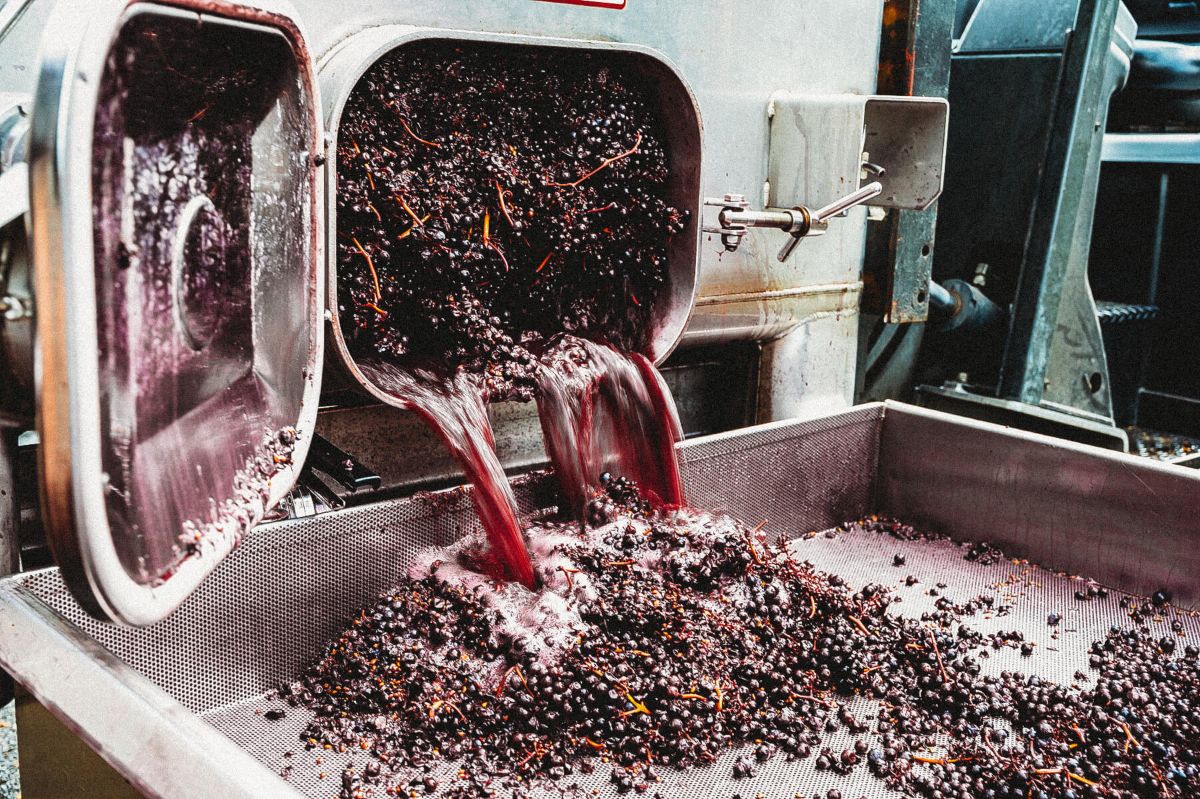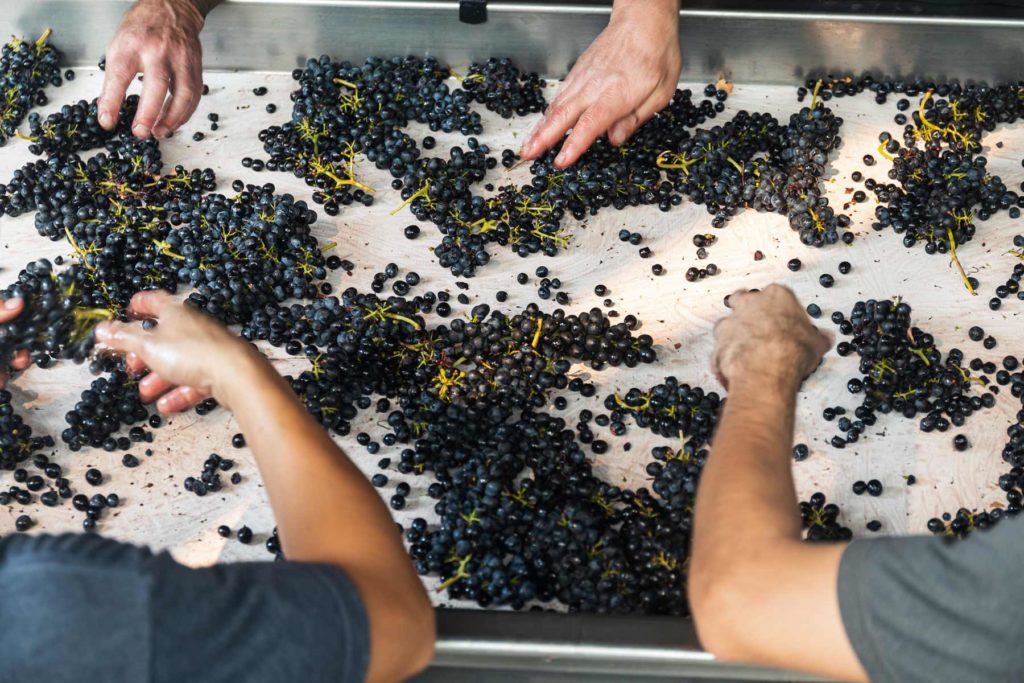
Tannins in wine are an important element of the production process that most people have heard mentioned at some point without really understanding what these magical ingredients do and if they are good, bad or indifferent. Are they necessary? Do they have any health benefits or otherwise? Do all wines have them? If you’re interested in the answer to any of these questions – read on!
The definition of a tannin in the Merriam-Webster dictionary is as follows: “any of various soluble astringent complex phenolic substances of plant origin used especially in tanning leather and dyeing textiles, manufacturing ink, clarifying wine and beer, and in medicine”.
Sound complicated? Effectively these are naturally occurring substances and can be derived from things like trees, legumes and fruits (including grapes).
Their super power though is their ability to mix with other molecules (specifically protein) causing them to form a liquid.
These tannins can be found in grape skins, seeds, stems, oak and additives and their presence can give wine particular characteristics, including dryness or bitterness. Tannins are also found in drinks such as tea, and juices like apple and cider as well as in foods including chocolate, nuts and chickpeas.
In contrast to tannins in plants, whose presence is intended to make them unpalatable, the presence of tannins in wine, when managed well, can have several positive results.
Firstly, a tannin in wine acts as an antioxidant, protecting the wine and increasing its shelf life – it also causes that sediment found in the bottom of bottles.
Secondly, tannins give “body” to a wine and a more well-defined structure, as well as texture and mouthfeel. This could be compared to how the skeleton gives the human body support, whilst still allowing it to move freely. And a “tannic” red wine will bind to a drinker’s protein-heavy saliva, causing the mouth to feel dry and making a steak and a glass of red wine an excellent pairing.
Tannins make a wine distinctive and unusual, they effectively make a wine taste, well, like a wine. Finally, tannins create balance, where the acid, tannin and the fruit in a wine exist together in harmony. If a wine is higher in one element – tannin, alcohol, or acidity – the result can be unpleasant, creating a below-standard wine.

Tannins have several potential health benefits:
All wines have tannins, but red wines often contain more tannins than white or rosé wines. Hence red wine often heralded as being especially good – in moderation of course!
Your route to finding out how much tannin a wine has is to taste a drop. Tannins in wine give you a sense of dryness and bitterness at the front of the mouth and the side of the tongue. This feeling will stay with you after you have swallowed the mouthful.
Try not to confuse this dryness with the term “dry” as used to refer to a type of white wine, which is used to describe the level of sugar in a wine rather than a sensation in the mouth.
It’s hard to define the flavour created by tannins, but think about acidity and / or bitterness.
A lot of people will feel no effect from tannins, but it is possible to be intolerant to tannins and this can result in headaches / migraines, stomach aches or bowel irritation.
Some wine drinkers feel that wines, that are high in tannins, might make you feel unwell, but the truth is that these side effects are likely attributed to poor wine-making techniques rather than the presence of the tannin itself.
An often spoken of side effect of tannins is headaches, along with the perception that you should stick to white wines or rosé wines if you want to minimise your chances of getting one. This can of course be directly linked to how much wine is consumed at any one time rather than the presence of tannins, as well as the amount of sulphur used in the winemaking process.
Headaches are of course more likely if you are a person who is already prone to them. You can work out if you might be more susceptible to headaches from tannins by sampling other food and drink that contain tannins, like chocolate, walnuts or almonds. If you find that you get headaches from chocolate and tea as well as red wine, it might be best to stick to white and rosé.
Similarly, some small animal studies suggest that tannins can affect energy metabolisation, growth rates and protein digestibility for people who are inefficient at digesting nutrients.
However, headaches could be caused by other substances found in wine, or simply by not drinking enough water – you should aim to drink one glass of water for every glass of wine.
The long and short of it is that if you are not actually allergic to tannins, it is unlikely that this is what is causing a headache.
The drier your mouth feels, the more tannins your wine contains and red wines that are described as “full-bodied” are higher in tannins.
Examples of wines that are high in tannins include Bordeaux red wines, Nebbiolo Cabernet Sauvignon, Tuscan wines, wines made with Sangiovese grapes and Shiraz or Syrah. Cabernet Sauvignon in particular is a thick skinned grape with a high amount of tannin.
As a result, balancing the alcohol with the acid and tannins can become more challenging. Younger California Cabernet Sauvignon can be quite dry to the taste giving a hairy feeling to the teeth and gums. As the wines age, with the balance of acidity and alcohol or sugars, the tannins integrate and help to keep structure.

Wines with smaller price tags tend to have lower tannin levels. One of the reasons for this is that increased grape production in the vineyard reduces the polyphenol content in each grape. Also, higher tannins can contribute to shelf life, which is likely to be longer in more expensive wines that are given more ageing time.
The making of more expensive wine is more complicated, and high-end red wines have more tannins which can help a wine to become more complex. Post-fermentation maceration is used in the creation of more expensive wines; after the wine has been separated from the grape skins and fermented it is left in contact with the grape skins for a time so that the tannins can be extracted.
Cheap wines are more likely to contain additives to make up for the absence of some of these steps in the winemaking process – these are the processes that take more time and money.
As we have said, the presence of tannins in a wine is linked to the length of maceration time during the winemaking process and the quality and / or ripeness of the stem, skin and seeds of the grapes.
Most white and rosé wines are fermented without their skins, seeds or stalks and as a result, are lower in tannins and much less dry than red wines. An exception to this rule is Chardonnay, which is more strongly tannic as it is often aged in wooden barrels.
As discussed, tannins tend to be more prevalent in thicker skinned grape varietal. The quality of the winemaking in our portfolio means the tannins tend to be well integrated in the style of the wines.



The Oxford Union, Frewin Court, Oxford, OX1 3JB
